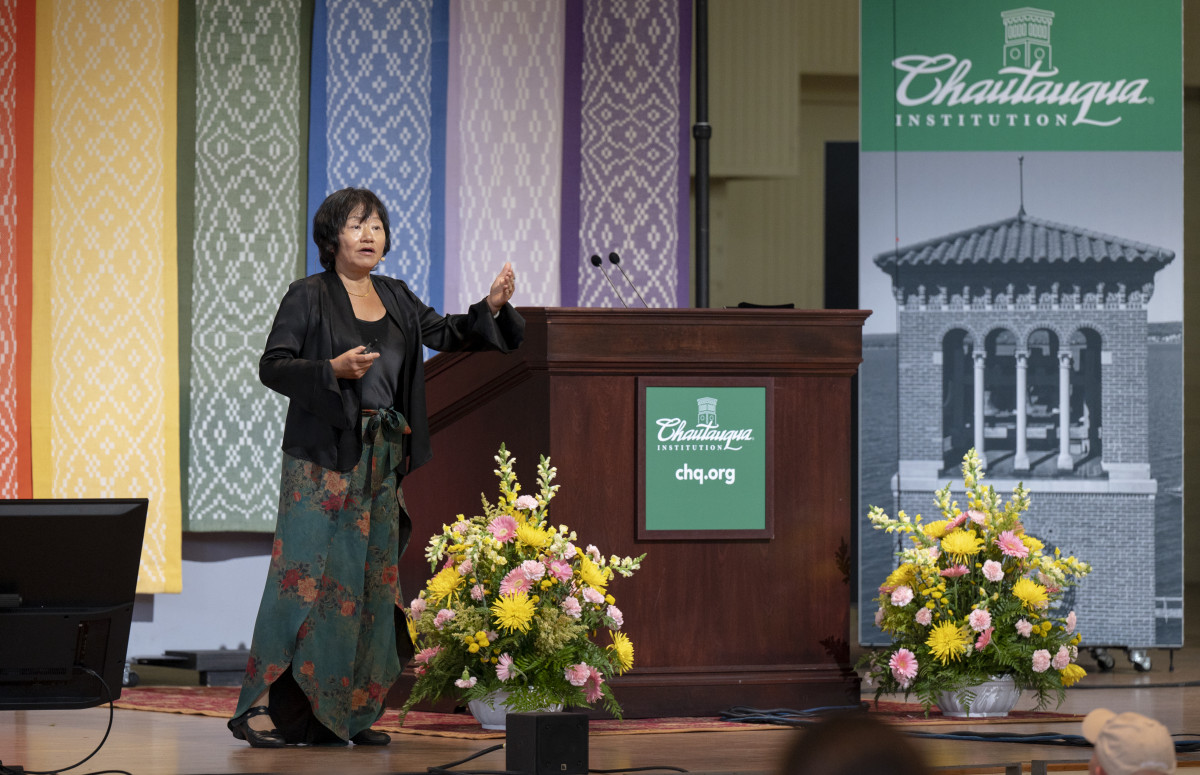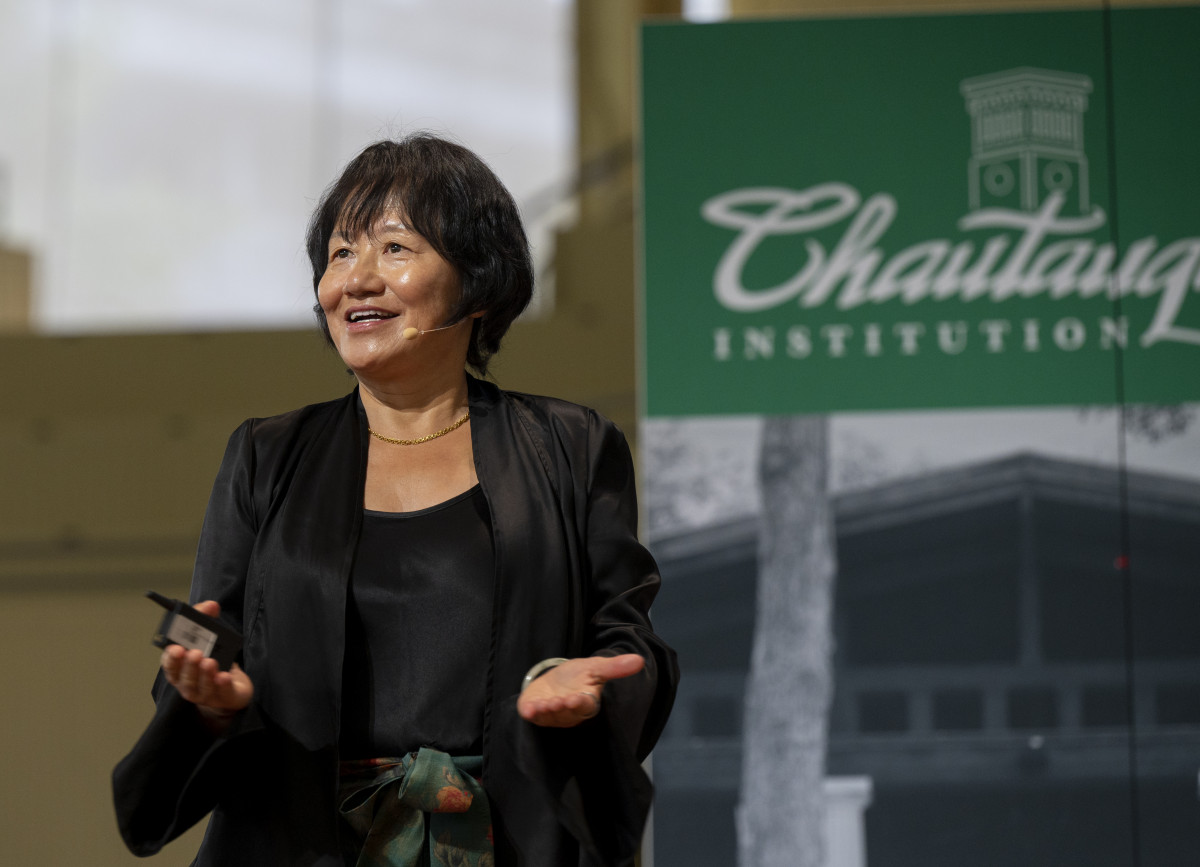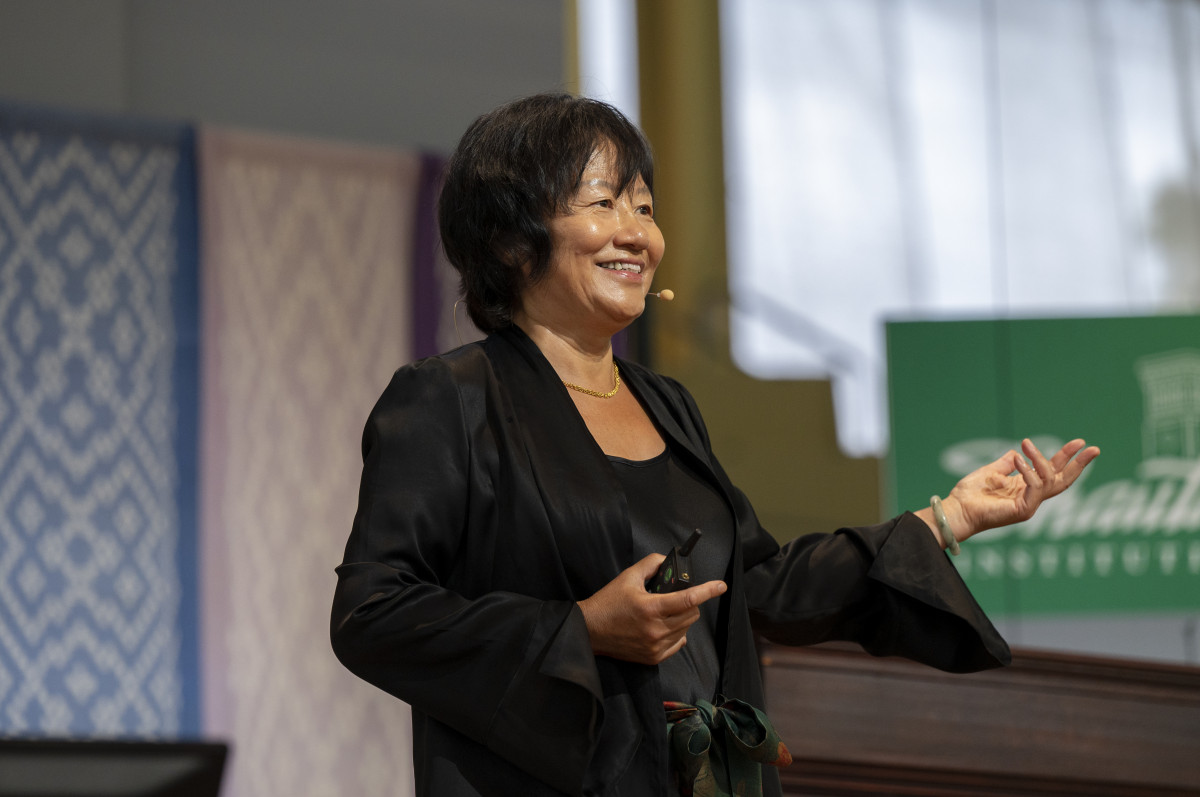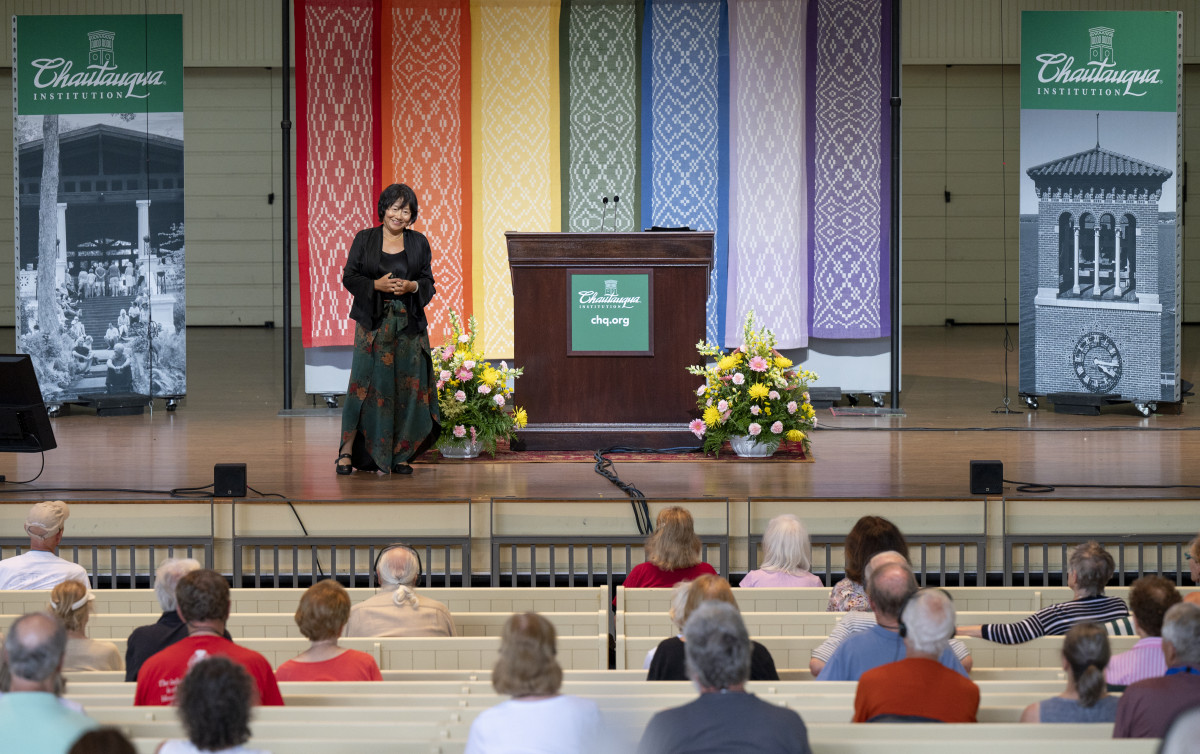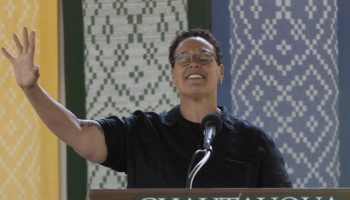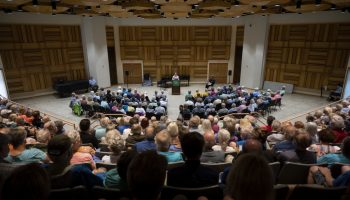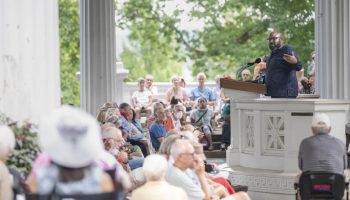MAX ZAMBRANO – STAFF WRITER
Teaching is what philosopher Robin R. Wang does best, and this week she made her first visit to Chautauqua to teach the fundamentals of Taoism, Yin Yang and body cultivation.
“These things are uniquely Chinese,” she said. “These are Chinese seeds growing in Chinese soil.”
On Wednesday, June 30 in the Amphitheater, Wang presented her lecture on these topics as the third and final Interfaith Lecture for Week One, themed “21st Century Religion in China: Collaboration, Competition, Confrontation?”
Wang teaches philosophy at Loyola Marymount University in Los Angeles, and she is the author of Yinyang: The Way of Heaven and Earth in Early Chinese Thought.
She began by differentiating Tao from Dao. Both words mean the same thing, Wang said, which is a road, a path or a way, but the translation one uses affects the spelling. Taoism, then, is the religion.
“It is humans’ place in the cosmos,” Wang said. “Why are we here? Where are we going?”
Wang then mentioned the text Tao Te Ching, or The Book of the Way, originally written in the 4th Century B.C. on bamboo and silk scripts. It acts as the sacred text for Taoism, like the Bible would be to Christianity or the Quran to Islam.
There are several versions and translations of the book, Wang said, because Chinese is a pictorial language and doesn’t translate directly to a language like English, leaving it open to different translations. Some translations are conceptual and some look more at body cultivation, or strengthening the mind and body, Wang said.
Chapter 42 of the book references Yin and Yang, a concept Wang thinks is not fully understood.
“I walk around Venice Beach, and there are yinyang earrings, surfboards and tattoos,” she said. “Everyone thinks they know about the Yin Yang.”
She said people just think it is a cool symbol with black and white fish chasing each other. This lack of understanding inspired her to write her book on Yin Yang, which she said took her around seven years to finish.
“Yin Yang is the key,” she said. “Yin Yang helps you unfold Chinese (cultural) DNA.”
The origin of Yin Yang comes from humans’ obsession with the sun, Wang said. When the sun came out of the horizon, if there was a hill, the south would be full of sunshine while the north would be in the shadow. This concept was especially important for farmers planting their crops.
Another example Wang used was earthquakes. She said if the Yin Yang would get stuck, the earth would shake. Essentially, Yin Yang is a conceptual way of explaining the world, Wang said.
Yin is more aggressive, or masculine, than Yang, Wang said. She also described Yin as rooster mode and Yang as hen mode.
Yin Yang, therefore, points to relationships and connectivity, Wang said. She then described six different relationships.
First was contradictions, opposites or differences. To start off, she gave an example of a student who might be hesitant about making a decision, instead wanting to take a nap and then decide what they wanted when they woke up, in order to make a good decision, Wang said.
“(Taoism) is humans’ place in the cosmos. Why are we here? Where are we going?”
Robin R. Wang
Author,
Yinyang: The Way of Heaven and Earth in Early Chinese Thought
“In Yin Yang, it’s not about winners or losers,” she said. “In China, when we have contradictions or differences, we reposition. It’s a Chinese skill.”
Another example Wang gave is children fighting over who can play with a toy. A solution could be to let the child who had it first play first, and then take turns with equal shares of playing time.
The second relationship is interdependence.
“One side of the opposition cannot exist without the other,” Wang said.
She gave a few examples of this relationship, too. One was a door — if it is open, one sees open space, but if it is closed, it looks like a wall. She presented a drawing from 200 A.D. that shows the physical pumping heart and a corresponding spiritual heart.
“Clearly, you can see the unity of the mind and spirit,” she said. “It’s not a dualistic split. Mind and body always go together.”
Wang also described a female-only Taoist academy — the only one in the world — in Nanyue Mountain, noting Taoism does not put limitations on women’s roles. There, they don’t have washing machines and have their own vegetable garden because all Taoists are vegetarians.
“Human beings are a part of nature, not the center,” Wang said.
Wang also said all Taoists temples are often in the mountains in order to be closer to nature.
The third relationship Wang described was mutual inclusion. In the Yin Yang symbol, there is a white dot encompassed by the black, and vice versa. She said to think of this like day and night. During the daytime, people confront the brightness, knowing that nighttime and darkness will come again no matter what. If someone prefers one, they have to experience the other anyway.
She also said it was like a silent transformation, something that goes unnoticed by humans.
“It happens — one day, you look in the mirror and realize you’re old, or that the grandchildren grew,” she said. “Which day did this happen?”
Wang said there are two souls that act as interrelated forces. There is the hun-soul, which goes to the sky toward heaven, and the po-soul which pulls downward to earth.
“These are underlying currents,” she said. “To understand China, you need to understand underlying currents.”
The fourth relationship, resonance and interaction, is where each element shapes and influences the other. Similar to mutual inclusion, day and night interact where one comes and goes.
Wang said there is the Tao of Thought and Religion, but they are not separated. Instead, she said they are intertwined and mutually influence one another.
The fifth relationship was complementary and mutual support.
“You can’t teach somebody to use chopsticks,” Wang said. “There is no right way to use it. If you can pick up rice and put it in your mouth, that’s the right way.”
She said there is table etiquette, of course, and this relationship deals with art and culture. She referenced tai chi and martial arts as a way of teaching movement, too.
The sixth and final relationship was change and transformation.
“The body is the vessel of the Tao, and the miniature of nature,” Wang said. “Keeping the body healthy is the first stage of the quest for transformation and immortality. It is the carrier for transcending.”
She based this relationship off the Chart of the Inner Body, found in the White Cloud Daoist Temple in Beijing, which divided the body into three sections.
The Lower Field is below the belly button, where the essence for a woman is blood, and for man is sperm. The main problem that arises in this area is lust, she said.
The Middle Field is the chest, home of emotional entanglement, she said.
“Your heart gets hurt, and you can’t let it go,” Wang said. “To solve it, you connect with the cosmos, and you can release it.”
The Upper Field pertains to the brain. Here is the fight with stupidity and solving problems, she said.
Wang then compared life to riding a horse, where one has to consider weather, terrain, the horse’s temperament and how far the horse needs to go.
Taoism is like in mathematics when one starts broadly, then learns more and more until finally becoming very specific.
She said Taoism is a great way to think about dealing with China.
“These six relationships let us think about our relationship,” Wang said. “We need communication, and we need to work together and solve these bigger global issues and in our personal life.”


